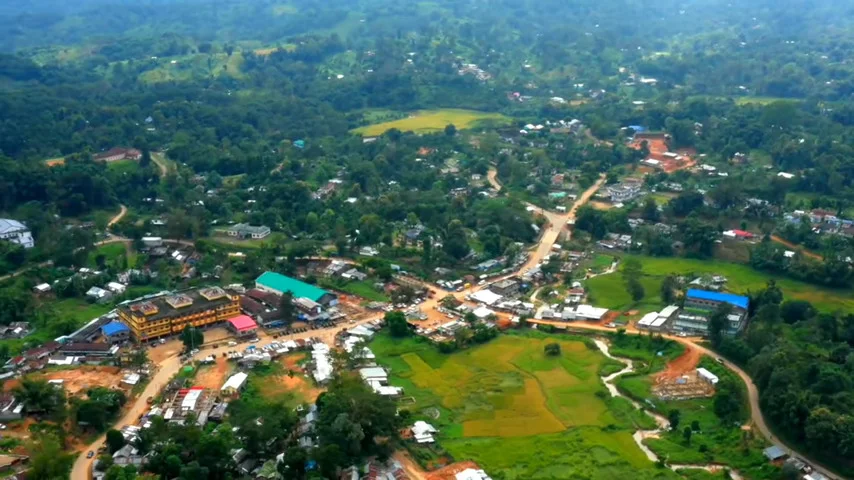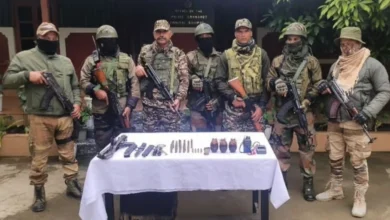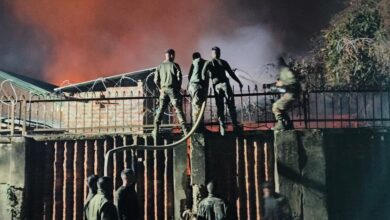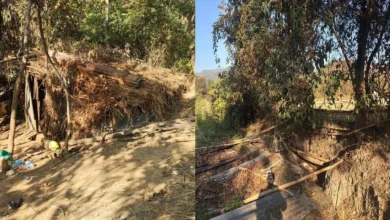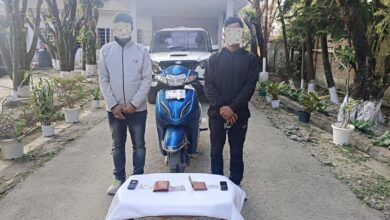The simmering tensions following the ethnic violence in Manipur have spilled over into Assam’s Karbi Anglong
district, with reports of over 1,000 Kuki refugees fleeing clashes back home and seeking shelter in the region. This development has prompted concerns from Karbi Anglong Autonomous Council (KAAC) and local groups, including the Karbi Lammet Amei (KLA), an apex literary and cultural body of the Karbi community, which has called for immediate government intervention.
Dr. Tuliram Ronghang, the Chief Executive Member (CEM) of the KAAC, has stated unequivocally that the district has no space for these “newly arrived migrants.” Speaking at an event in Howraghat, around 180 km east of Guwahati, Dr. Ronghang emphasized, “The Kukis are tribals, but they cannot settle down here in Karbi Anglong.” He added that the KAAC is actively engaging with the Karbi Students’ Union and Kuki village leaders, with a meeting scheduled for November 28, 2024, to discuss the situation. “We want to give the migrants a good send-off,” Dr. Ronghang said.
Concerns Over Influx and Territorial Occupation
In a memorandum submitted on October 4, 2024, to Dr. Tuliram Ronghang, Chief Executive Member (CEM) of the Karbi Anglong Autonomous Council (KAAC), the KLA expressed deep concerns about the sudden arrival of Kuki refugees in Karbi Anglong. The group alleged that the displaced people were occupying the Singhason and Khonbamon Hills and adjoining areas under the Singhasan and Borjan Member of Autonomous Council (MAC) constituencies. These lands, according to the KLA, hold historical and cultural significance for the Karbi people.
The KLA stated in the memorandum:
“Our precious land that our forefathers left us in our custody are now in their hands. This is a matter of great concern, and we seek your kind authority to immediately intervene in the situation.”
The memorandum highlighted the ethnic strife in Manipur as the root cause of this influx. Since May 2023, Manipur has been grappling with ethnic violence between the Meitei and Kuki communities, leaving thousands displaced. This violence has now reportedly impacted neighboring regions, with refugees crossing into Assam for safety.
Key Demands Raised
The KLA’s memorandum outlined three specific demands aimed at addressing the situation:
- No Transfer of Land: The KLA urged the KAAC to prohibit the granting of land to Kuki refugees from Manipur.
- Temporary Shelters Under State Supervision: The group recommended that the KAAC and the Assam government arrange makeshift camps or shelters in designated areas to house the refugees temporarily. These should be under strict state supervision to prevent further tensions.
- Repatriation Post-Normalization: Once the situation stabilizes in Manipur, the KLA insisted that the government should identify and deport the refugees back to their home state.
Kuki Perspective and Humanitarian Concerns
The Indian Express reported that Kuki organizations have denied allegations of encroachment and emphasized the humanitarian aspect of the situation. Many refugees, including women and children, have been displaced by the violence in Manipur and are seeking safety in Assam.
While the KLA’s memorandum stressed the preservation of Karbi identity and territorial rights, critics argue that addressing such issues requires a sensitive and balanced approach. The government faces the challenge of managing local concerns while upholding its humanitarian responsibilities toward displaced populations.
Political Ramifications and the Role of KAAC
The KAAC, led by the Bharatiya Janata Party (BJP), is now under pressure to act decisively. With Assam’s Chief Minister Himanta Biswa Sarma playing a pivotal role in managing tensions in the Northeast, the KAAC’s response will be closely watched. The situation also underscores the broader implications of the Manipur conflict, which has created ripple effects across neighboring states.
The KLA’s memorandum reflects the growing anxiety among the Karbi people about the potential demographic and cultural impact of the refugee influx. As stated in the document:
“The department and the state must immediately identify and deport the influx from Manipur when the situation is normalized.”
Historical Tensions and Ethnic Clashes
Karbi Anglong’s history has been marked by strained relations between the Karbi and Kuki communities. The district experienced severe violence in 2003-04 when over 75 people, primarily Karbis, were killed in clashes over land, resources, and the activities of extremist groups such as the Kuki Revolutionary Army. Most of the victims were allegedly killed by Kuki extremists. The memories of this conflict continue to shape the Karbi community’s outlook on new migrant groups.
Although Karbi Anglong has small, established Kuki settlements, particularly in the Singhasan Hills region, the arrival of over 1,000 new migrants has sparked fears of a repeat of past tensions. This issue highlights the interconnectedness of ethnic, territorial, and humanitarian concerns in the Northeast. While immediate relief for refugees is essential, a long-term strategy addressing the root causes of displacement is equally critical.

